Aquaporin‑1 regulates microglial polarization and inflammatory response in traumatic brain injury
- PMID: 39749692
- PMCID: PMC11759584
- DOI: 10.3892/ijmm.2025.5482
Aquaporin‑1 regulates microglial polarization and inflammatory response in traumatic brain injury
Abstract
The present study investigated the mechanisms by which aquaporin 1 (AQP1) influences microglial polarization and neuroinflammatory processes in traumatic brain injury (TBI). A model of TBI was generated in AQP1‑knockout mice to assess the impact of AQP1 deletion on inflammatory cytokine release, neuronal damage and cognitive function. Immunofluorescence, reverse transcription‑quantitative PCR, western blotting and enzyme‑linked immunosorbent assay were employed to evaluate pro‑inflammatory and anti‑inflammatory markers. Behavioral assessments, including the Barnes maze, were performed to determine cognitive outcomes. Moreover, AQP1 knockout inhibited the activation of inflammation‑related signaling pathways, including nuclear factor‑κB, Janus kinase/signal transducer and activator of transcription, phosphoinositide 3‑kinase/protein kinase B and extracellular signal‑regulated kinase/mitogen‑activated protein kinase pathways. Further studies indicated that the AQP1 inhibitor m‑phenylenediacrylic acid demonstrated significant neuroprotective effects in a mouse model of TBI. These findings suggested that AQP1 may be essential in post‑TBI inflammatory responses and neuronal injury, establishing a theoretical foundation for future therapies aimed at AQP1.
Keywords: AQP1; TBI; inflammation; microglia.
Conflict of interest statement
The authors declare that they have no competing interests.
Figures
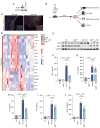
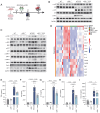
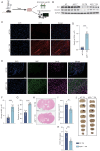
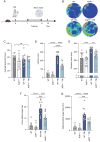
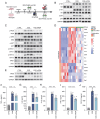
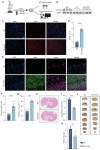

Similar articles
-
Omega-3 polyunsaturated fatty acid attenuates the inflammatory response by modulating microglia polarization through SIRT1-mediated deacetylation of the HMGB1/NF-κB pathway following experimental traumatic brain injury.J Neuroinflammation. 2018 Apr 20;15(1):116. doi: 10.1186/s12974-018-1151-3. J Neuroinflammation. 2018. PMID: 29678169 Free PMC article.
-
CD36 deletion prevents white matter injury by modulating microglia polarization through the Traf5-MAPK signal pathway.J Neuroinflammation. 2024 Jun 5;21(1):148. doi: 10.1186/s12974-024-03143-2. J Neuroinflammation. 2024. PMID: 38840180 Free PMC article.
-
BAY61‑3606 attenuates neuroinflammation and neurofunctional damage by inhibiting microglial Mincle/Syk signaling response after traumatic brain injury.Int J Mol Med. 2022 Jan;49(1):5. doi: 10.3892/ijmm.2021.5060. Epub 2021 Nov 9. Int J Mol Med. 2022. PMID: 34751408 Free PMC article.
-
Microglia-mediated neuroinflammation in traumatic brain injury: a review.Mol Biol Rep. 2024 Oct 19;51(1):1073. doi: 10.1007/s11033-024-09995-4. Mol Biol Rep. 2024. PMID: 39425760 Review.
-
Fundamental Neurochemistry Review: Microglial immunometabolism in traumatic brain injury.J Neurochem. 2023 Oct;167(2):129-153. doi: 10.1111/jnc.15959. Epub 2023 Sep 27. J Neurochem. 2023. PMID: 37759406 Free PMC article. Review.
References
MeSH terms
Substances
LinkOut - more resources
Full Text Sources
Medical
